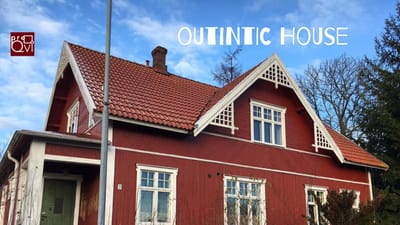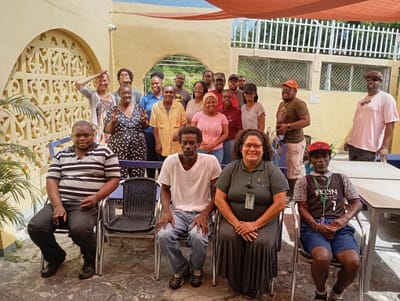First steps of Outintic initiative

Outintic Summit 28-29 November 2021, Helsingborg
What is "normal" way of life and how many of these ways there can be, who sets up agenda for normality within learning, work and relations? How do we evaluate and recognize different competences when we meet them? What do our age, talents and dreams actually mean? Just as any other beautiful day, we decided to spend 26-28 of November on discussing these issues with our present and future colleagues, from all over Europe, calling a first Outintic Summit in Helsingborg. We invited specialists: theoretics, practitioners, public service operators, representatives of recruiting companies, researchers, youth workers, etc who have in one way or another encountered the matters of deviant competences, to join the summit.
Read More
Outintic training course part 1 and 2, Turkey /Sweden
Outintic was a project supported by Erasmus+ program running between 2018-08-01 and 2019-10-31. In this period, we met three times: For a planning/strategy meeting, 16-20 December in Sweden, Hästveda (Hässleholm municipality). For a Study visit, we met again in Sweden for 6 days on 1-6 August. For the final activity 7 days long, we went to Istanbul and were hosted by Kadikoy municipality.
Read More
Outintic house opens up!
On June 16 2019, we have officially taken a decision to open up the facility for outintics (people who have a clearly different from their environemnt, way of communnicating, learning and behaving), and researchers (people who share and support the philosophy of multiple normalities and deviant competences, and work to deepen the knowledge about it) in Hästveda, Sweden!
Read More
SintMaarten Harmony
Through the project we popularized the approach towards understanding universal mental diversity with help of tango. Tango has a powerful recovering and therapeutic effect on me and other people with similar conditions. I started to work with tango as a stress-recovering aestethic practice and I wanted to prove that even overseas people with NPF bare exactly the same mental patterns, blessing as burdain and can find a way to harmony in the same way. The message of this artistic research was, our common grounds are built into harmony of human nature. A number of tango workshops were conducted with people with sensoric issues, finding out as we go, methods to work with and around these issues. We produced and promoted a new concept of connection with a person's perception of harmony and peace, to reflect on matters of relation to themselves, their bodies and other people through tango. During the time of the project we could transfer relevant pedagogical skills to school- and dance teachers and other professionals. I wanted to travel on the other side of Earth to enhance the message that mental capacity and sense of harmony are universal and are of supracultural character. In time of increasing hostility between countries we need to see what unites us. We as colleagues continue communication even after the project and while we continue spread the concept here in North Europe, Sint Maarten would be a center of the concept translation and development in the Carribbean. The project schedule had a formal part connected to school curriculum where we would be organising dancing workshops with kids at Teresas school, and a non-formal part dedicated to artistic research and experiments with local dance teachers and people with disabilities, visible and not, as well as information meetings and public performances. We planned that during the whole period of the project we document the process so we can later dedicate ourselves to digital promotion of the outcomes of this artistic research. The project would contribute greatly to de-dramatisation of neuropsychiatric and sensory issues and function variations. This would have a huge affect on social inclusion, employability, well-being and personal development of these people and their families. As the skills within performance and dance would also grow it would open opportunities for new ways of thinking about own capacities, values and future prospects, as well as relation to one's own body and its functioning. Acceptance that follows would help people focus more on their capacities rather disabilities, and this can change the way we think about normalities, competences, stress and ambitions. On a bigger scale, it can help people to connect with others based on their own unique mind pattern and sensitivity and not based on attributes like skin colour, age, gender or social background. I wanted to come and prove the idea that we have common supracultural grounds that have been driving our development forward, to extreme modernization, ecological disasters but that also has a potential to lead the humanity out of crisis, towards sustainable coexistent satisfying life.
Read More

